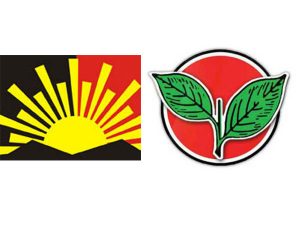2019 polls: Mathematical analysis gives DMK advantage in TN

A mathematical analysis of the 2016 Assembly results and the present alliance formulations in Tamilnadu, reveals that the DMK will win 29 Lok Sabha seats, against only 9 by the ruling AIADMK, with one seat, Kanchipuram, being too close to call (TCTC), provided the AIADMK secures 27 per cent votes now, compared to 40 per cent in 2016.
The analysis takes into account a probable division in AIADMK votes due to three factors – the absence of Jayalalithaa, its chief minister and star campaigner, a perceived anti-incumbency factor against both the ruling parties, the split created by T T V Dhinakaran (AMMK).
The nine seats for the AIADMK would be Arakkonam, Arani, Chidambaram, Coimbatore, Cuddalore, Dharmapuri, Salem, Tenkasi, Villupuram.
If the AIADMK vote share drops further to 22 per cent, the DMK will pick up more seats, taking its tally to 33, leaving only three (Chidambaram, Dharmapuri, Villupuram) for the AIADMK, (with three seats being TCTC (Arakkonam and Salem having slight edge for AIADMK, while DMK has a slender lead in Cuddalore).
The mathematical analysis is based on calculation of the AIADMK front as addition of actual PMK votes secured on its own in 2016, average 60 per cent of votes secured by Makkal Nala Koottani in each Assembly constituency as transferred by DMDK and TMC (new allies of the AIADMK), plus BJP Assembly votes (including IJK) votes of 2016, and PT votes wherever applicable, while the AIADMK kitty would be as seen above.
On the other hand, the DMK front would have its 2016 votes added to average 40 per cent of MNK votes secured in each Assembly constituency (transferred to it by new allies like the MDMK, VCK, Left). The DMK would retain the 2016 vote base as though it could have lost some votes due to the absence of its leader M Karunanidhi, fact is that the cadre-based party could retain its votes especially since the loss of AIADMK votes (amounting to 18 or 13 per cent as the case may be) has not been transferred to the DMK-led front. The DMK starts with an advantage of average 39 per cent vote share with some addition from its new allies.
In terms of break-up of Lok Sabha into Assembly seats, this analysis would provide the DMK 192-193 seats as against only 40 to 41 for the AIADMK.
What is more important is the likely results of the 18 by-elections to the State Assembly being held on 18 April. The mathematical analysis would provide the DMK 11-13 seats, against 5 to 7 for the AIADMK. By-elections would be held for 4 seats later, promising yet another close battle.
If the AIADMK limits its losses on three fronts to just 10 per cent from the 2016 figure of 40 per cent, it could improve its chances of picking up a few more seats. If the loss is more than 10 per cent, chances are that the DMK could end up with over 30 seats.
This is a purely mathematical exercise without venturing into forecasts or merits and demerits of parties and candidates.
In a few constituencies, parties have been given some extra weightage due to the possible influence of heavyweights in the AIADMK, especially some ministers, and in the DMK.
